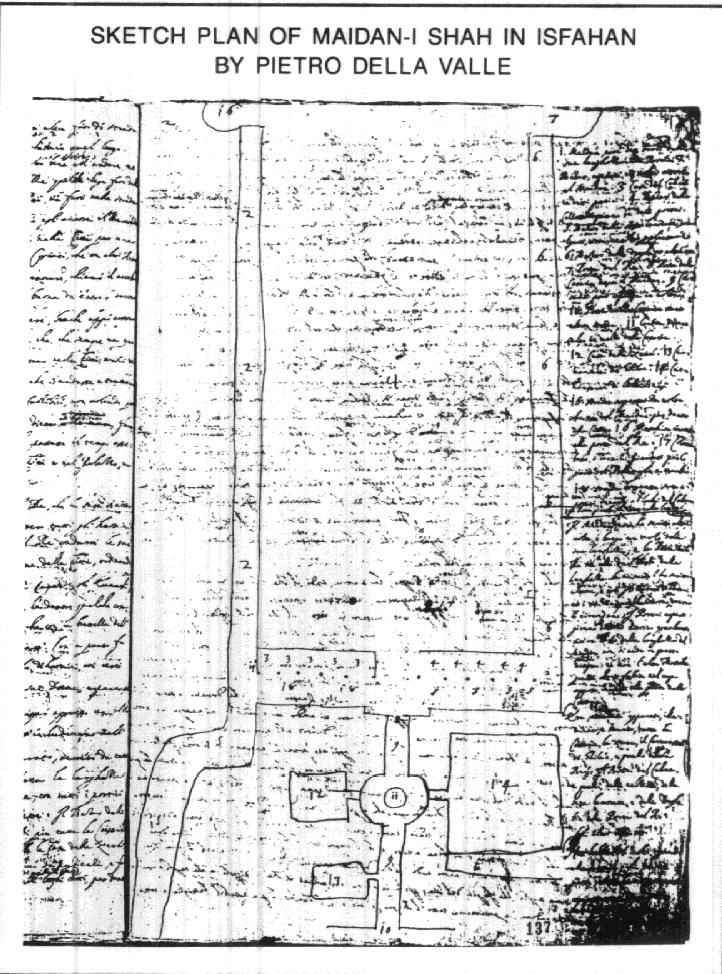The “massive scale and orderly disposition” that Babaie has suggested was important to the Persians[1] is focused on much more explicitly in later-published Western accounts – perhaps linked to the rise in Europe of Palladianism. Della Valle, for example, wrote of the “porticos” around the maydan being:
“the most beautiful, the most equal, and of the most regular symmetry that I can say, without having the order interrupted by any streets, or anything else. … And I assure you that this huge suite of buildings, with such a symmetry, has such a beautiful effect, and so pleases the view, that although the houses in the Place Navone [in Rome] are higher and more magnificent; it’s nevertheless that, since [in Rome] they have so little rapport between themselves… that this Place Navone cedes to [the maydan] in beauty[2].
Figueroa and Chardin both similarly commended the maydan’s vast regularity. In Chardin’s 1720 English edition, there is a ten-page fold out image of the west side of the maydan:
“I must observe one Thing more before I take leave of the Reader, viz, That I have put one of the Fronts of the Royal Palace of Ifpahan before the first Volume .. not that this plate comes in here … but only to give an idea of the Magnificence of that vast Palace, which is without doubt the finest in the World”[3].
The 1735 edition of Chardin’s work included fourteen (expensive to print) fold-out pages, mainly illustrating the repeated portico-style shops / apartments – and so indicating their perceived importance[4].
[1] Sussan Babaie, Isfahan and its Palaces, 89-90.
[2] Pietro della Valle, Les Fameux Voyages de Pietro della Valle, Gentilhomme Romain surnomme L’Illustre Voyageur, avec un denombrement tres-exact des choses les plus curieuses, & les plus remarquables … (Paris: Chez Gervais Clouzier, 1670, Pt 2, 40-1.
[3] John Chardin, Travels in Persia, Never before Translated into English … (London: Printed for the Author, And sold by J.Smith in Exeter-Change in the Strand, 1720), Preface.
[4] John Chardin, Voyages de Chevalier Chardin en Perse et autres lieux de L’Orient (Amsterdam: Aux depens de la Compagnie., 1735). Figures XXXIV to XXXVII.
